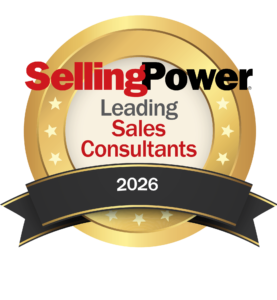From Sales Training to Sales Enablement to Revenue Enablement

The Sales Enablement Evolution Has Begun
It’s an evolution that’s hard to ignore. From the introduction of call centers 40 years ago, CRM solutions 30 years ago, and digital channels 20 years ago—we are at the brink of a data revolution in sales that will revolutionize most traditional selling techniques, terms and likely, sellers in the industry.
We’ve long been due for a change. And the data supports the imperative to change:
- McKinsey’s latest research shows that 94% of B2B decision makers say the new omnichannel sales model (an approach that focuses on the entire customer experience not the customers individual experience on different channels) is as effective or more compared to the sales model they used before the pandemic.
- Korn Ferry’s 2021 World-Class Sales Practices Study shows that sellers spend 20% of their time planning calls and only 30% of their time actually selling.
- According to Allego, on average, reps don’t know the answer to 40% of product questions asked by customers.
What’s Driving the Change in Sales Strategy?
The evolution of thinking about sales in a much more strategic way is ultimately driven by a long-standing need to make front-line sales faster, simpler, and more consistent. Ideally, saving time and money while getting to the win faster. The evolution has been slow coming for years, but the push on AI technologies and software, machine learning, and advanced analytics across industries is increasing the speed and pressure on sales organizations to introduce solutions that have real-time impact and make the seller along with the selling process smarter.
Essentially these solutions are bringing efficiencies to the critical components of sales including sales training, sales account management, pricing structures, proposal writing and performance measurement. They are quickly outpacing traditional CRM and digital marketing infrastructures allowing not only a smarter sales team but quick access the customer data, revenue and all the components that are important to “nailing” a sales pitch and connecting with a customer with ultimate precision on their pain points and objectives.
The integration of these technologies with the market push toward virtual selling has added even more degrees of velocity to this outlook on sales. The platforms empowering virtual selling from calendar integrations, recorded conversations and all other solutions for contactless selling have also led to more readily available data. As AI and machine learning are utilized to mine this data the outcome is an explosion of available real-time data that eliminates the need for an overall message and approach to sales and mandates a precision and specific approach for each customer. Afterall, with precision entering the equation, why wouldn’t this be the expectation?
The Shift to Revenue Enablement: Business Leaders are Scrambling
The evolution is hard-hitting to not just sales organizations but all components of an organization. Business and sales leaders alike are re-evaluating technology stacks, processes, and go-to-market models that make their teams, especially their sales teams, smarter.
They have grown to a position of reviewing ten or more separate solutions to forecast accurately and get to a true market position number. What they desire is one line of sight that provides the ultimate KPI or measurement that reflects progress and success. This either requires integrating multiple existing software platforms or the transition to a more AI approach that utilizes advanced analytics to provide the data they need quickly and accurately.
This change in business leaders’ approach to taking multiple windows of success and creating one large picture window is top of mind for business leaders because it’s become expected from not only employees and sellers but from customers. Disparate systems have grown to such a high point that it’s frustrating and incredibly lagging for all parties and is quickly becoming unacceptable.
Because of this pressure, sales enablement, sales engagement, sales readiness, sales training, and all of the other traditional approaches to sales are becoming part of one individual machine and losing their individual attention and desire in the marketplace—causing not only a merger of solutions and terms, but mergers of companies and organizations in the “sales performance” industry and leading to a revenue enablement approach
Business to Sales Alignment is Critical
Sales solutions really began with sales training, then turned to sales enablement, then sales strategy and so on. As these new solutions hit the marketplace, they didn’t replace existing solutions, rather introduced new methodologies and processes. This led to a fast overlap of not only solutions but capabilities, content, platforms, and sales playbooks. So instead of one focused approach to understanding progress, customers, and sales performance, you now had multiple, each slightly the same yet also enough degree different that they each held their own value.
While each solution is disparate in its own way, they are all fun off the same data—so where do sellers go to truly understand how to practice selling skills, learn new customer conversation techniques, prepare for sales meetings and pitches, etc.? Well, the choice has been murky at best—and that’s what needs to change.
While the need for change has increased dramatically and the pressure to migrate is accelerating it will take sales organizations some time to get there. Pinpointing how to migrate or move technology stacks in some of these large organizations is not an easy task. And the change comes with a high investment, one that requires research and precision investigation to ensure the solution encompasses the right capabilities and roadmaps to catapult success and doesn’t just create an additional haystack hiding another golden needle.
Conclusion
Some folks are deeming this new evolution as a Revenue Operating System—which is steps beyond talking about sales in pieces such as sales training, sales processes, sales strategies, etc. It’s no longer about looking at the individual parts of a sales engine but taking a step back to look at the full machine and how one visual can dictate how all components are working together. Afterall, you don’t buy a car just for the engine, you buy a car based on the engine, the exterior styling, safety features, etc. What sells you is how these things all work together—it’s about time sales organizations start looking at the whole car instead of the separate parts to accelerate their journey to sales success.
Get our Enewsletter
Get the latest sales leadership insight, strategies, and best practices delivered weekly to your inbox.
Sign up NOW →